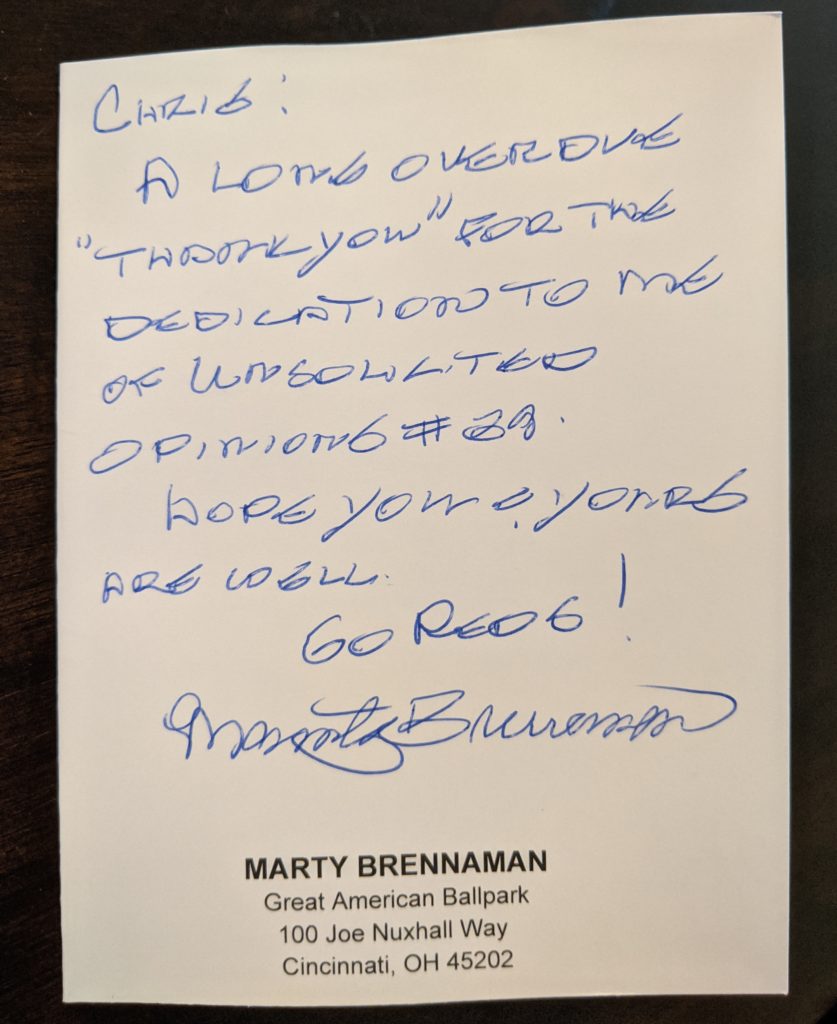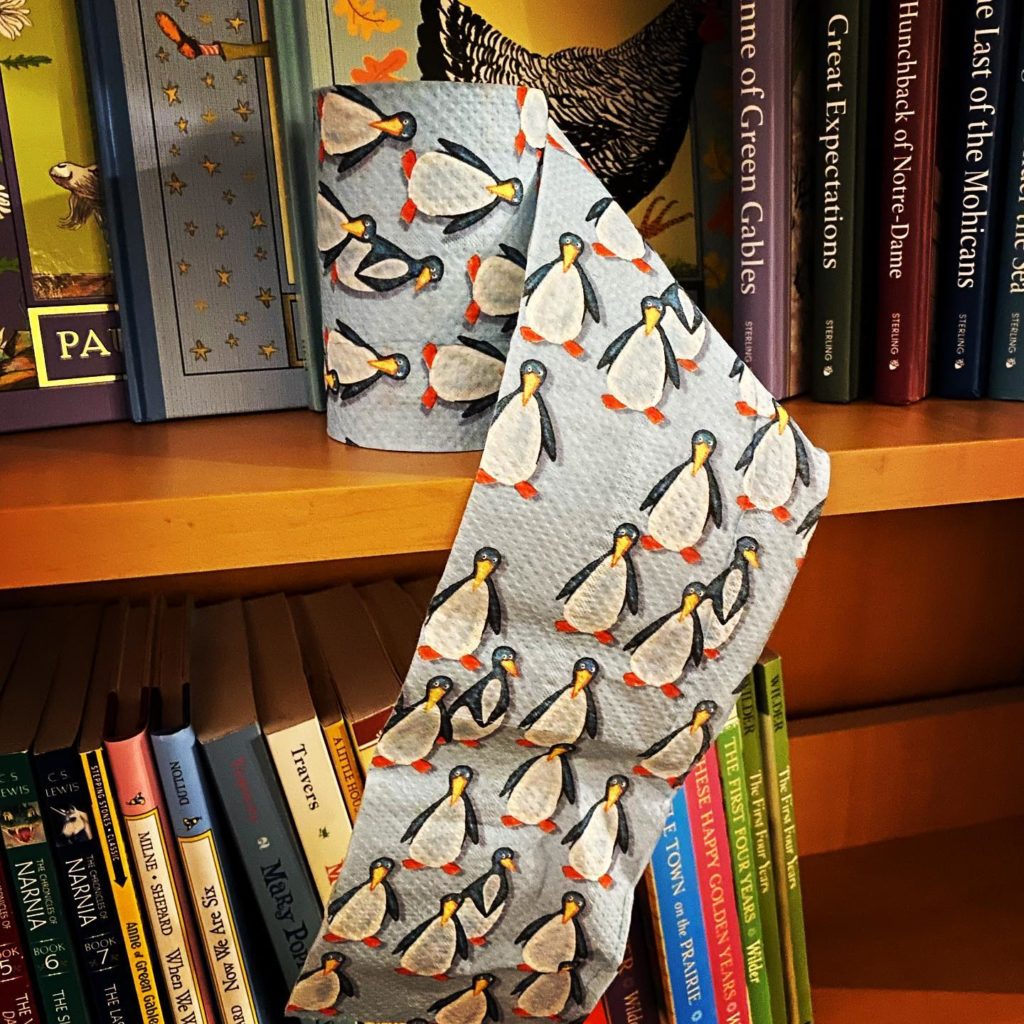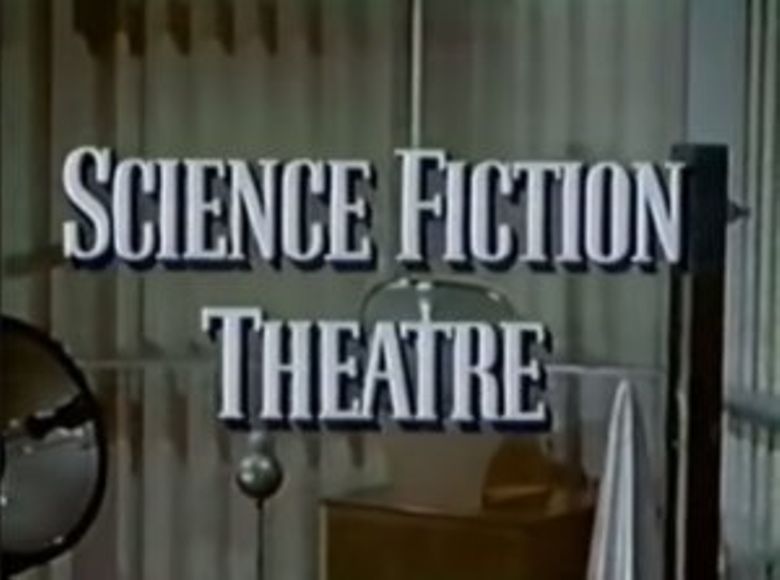(1) THE TEN DOCTORS. The BBC’s Big Night In fundraising telethon broadcast April 23 included “The Doctors’ inspiring message to all frontline workers” delivered by regiment of actors who have played Doctor Who — Jodie Whittaker, Peter Capaldi, Matt Smith, David Tennant, Paul McGann, Sylvester McCoy, Colin Baker, Peter Davison, Tom Baker, and Jo Martin.
Doctors, past and present, unite together to send a powerful message to all frontline workers in the fight against coronavirus. Comic Relief and Children in Need join forces for the first time to deliver a very special night of television during these unprecedented times.The Big Night In brings the nation an evening of unforgettable entertainment in a way we’ve never seen before. More importantly, it will also raise money for and pay tribute to those on the front line fighting Covid-19 and all the unsung heroes going that extra mile to support their communities.
An excerpt from the YouTube transcript:
…We have all come together together together together together together together together for one important reason to praise salute and give the heartfelt thanks to real-life special doctors nurses and everyone everyone working on the phone lines in our NHS and care homes and hospices what you all do and have done for all of us is amazing it’s crucial phenomenal…
(2) HOLLAND CON DELAYED. Kees Van Toorn’s Reunicon 2020, a 30th anniversary celebration of the Worldcon in The Hague, has been postponed until August 2021.
Due to official regulations enforced by many countries worldwide concerning the covid-19 virus, all public events and travelling restrictions have been scrapped or postponed. That includes REUNICON 2020, alas. However, we have rescheduled the convention in August 20-22 in 2021. We are confident we will be able to host REUNICON next year, making it a good place to come to and share memories of CONFICTION 1990 as well as to remember all those we have lost in the past years and the grim period we now face. In the meantime, be well, stay healthy and take care of each other. And stay tuned for more information!
(3) TODAY’S THING TO WORRY ABOUT. Steven Saus found a problem: “Minecraft Bug: Despawning Named Zombie Villagers”.
We discovered what seems to be a bug in Minecraft. Named mobs are not supposed to despawn when the chunk unloads, but named villagers that are turned into (named) zombie villagers end up despawning too.
.. My named villager “Bait” was turned into a named zombie villager all right, but he also immediately despawned when the chunk unloaded.
If you want to spend 90 seconds you can watch it happen – yes, I admit I did…
(4) ACHIEVEMENTS TO UNLOCK. At the SFWA Blog, Cat Rambo begins “Effective Goal Setting for Writers” with this overview:
Something I work on with my coaching clients is goal setting, which is made up of several parts:
- figuring out where they want to be in six months to a year
- figuring out what the milestones of that goal are and mapping them against the schedule
- figuring out the monthly goals they need to hit in order to achieve that schedule
- figuring out the weekly goals necessary to achieve those monthly goals
(5) US IN FLUX. The third story for Center for Science and the Imagination’s Us in Flux project launched today: “When We Call a Place Home,” by Chinelo Onwualu.
On Monday, April 27 at 4 p.m. Eastern, they’ll have another virtual event on Zoom with Chinelo in conversation with Robert Evans, a conflict journalist and host of the podcasts Behind the Bastards and The Women’s War about the story “When We Call a Place Home” and the real-world community in Northern Syria that inspired the tale.
(6) REASONS REVISITED. [Item by Chip Hitchcock.] In a free reprint from 2001, The London Review of Books’ Jenny Turner discusses “Reasons for liking Tolkien” — long, meaty, and balanced.
A writer, born around 1890, is famous for three novels. The first is short, elegant, an instant classic. The second, the masterpiece, has the same characters in it, is much longer and more complicated, and increasingly interested in myth and language games. The third is enormous, mad, unreadable. One answer is Joyce, of course. Another – The Hobbit (1937), The Lord of the Rings (1955), The Silmarillion (1977) – is J.R.R. Tolkien.
A writer, born around 1890, raged against ‘mass-production robot factories and the roar of self-obstructive mechanical traffic’ and ‘the rawness and ugliness of modern European life’. Instead he loved the trees and hedgerows of the English Midlands he had known as a boy, and the tales of ‘little, ultimate creatures’ he came across in the legends of the North. Clue: it wasn’t D.H. Lawrence.
A writer, born around 1890, worked bits of ancient writings into his own massive masterwork, magnificently misprising them as he went. Clue: it wasn’t Pound.
…A writer, born around 1890, declared himself a monarchist and a Catholic; and no, it wasn’t Eliot. In form, in content, in everything about it, The Lord of the Rings is the most anti-Modernist of novels. It is really very funny to think about how similar it is in so many ways to the works of the great Modernists.
(7) WHAT’S A WRITER TO DO? From The Guardian: “Margaret Atwood’s lockdown diary: life as an eccentric self-isolationist”.
As the first world war dragged on, volunteer women’s groups of all kinds formed in aid of the troops in the trenches: bandage rolling, preserved foods box packing, knitting. My grandmother joined a knitting group in rural Nova Scotia. You started on washcloths, progressed to scarves; then, if you were sufficiently adroit, you moved on to balaclavas and socks, and ultimately – the pinnacle! – to gloves. My grandmother was a terrible knitter. She never got beyond washcloths.
I’ve often wondered about these knitting groups. What were they for, really? Were they providing much-needed knitted items, or were they boosting morale by giving a bunch of otherwise very anxious civilians, whose sons and husbands were in jeopardy, something to do with their hands while waiting, waiting, endlessly waiting? I can see the socks and gloves making it to the frontlines, but the washcloths? Photographs of muddy, cramped, stinky trench life don’t show much washing going on. And my grandmother’s wonky, hole-filled washcloths in particular – were they sent to a secret depot where they were unraveled, and their wool reclaimed for something more functional?
So, in the spirit of my grandmother’s washcloths – not ultimately useful, perhaps, but let’s hope they focused the mind and gave a sense of accomplishment – I present some of my more bizarre self-isolation activities. You can do some of them at home. Though perhaps you won’t wish to.
…Another activity I’ve been doing lately is squirrel foiling. Hear a gnawing sound in the ceiling? These are your choices, in this part of the world: raccoons, possums, rats, squirrels, Google Earth. Probably squirrels, I thought, and so it proved to be. At first I foiled them by playing hot jazz and acid rock right under their gnawing station, but they got used to the wailing and screaming, so I climbed up a stepladder, placed a large steel bowl against the ceiling, and whacked it with a big metal serving spoon. Yes, I know, I shouldn’t have been doing that alone at night – the Younger Generation will scold when they read this – because people my age fall off ladders and break their necks, especially when not holding on because you need two hands for steel bowl banging. I won’t do it again, promise. (Until next time.)…
(8) MANDALORIAN MAKERS. Here’s a two-minute teaser for the next season of The Mandalorian, with appearances by Jon Favreau (creator/writer/executive producer), Dave Filoni (writer/director/executive producer), Deborah Chow (director), Bryce Dallas Howard (director), Taika Waititi (director/IG-11), Pedro Pascal (Din Djarin), Gina Carano (Cara Dune), and Carl Weathers (Greef Karga). Starts starts streaming May the 4th, on Disney+.
(9) MILLER OBIT. Ryder W. Miller (1965-2020) passed away March 15 after a six-month fight with pancreatic cancer. A critic, poet, writer, and journalist, he was a regular contributor to The Mythic Circle, Beyond Bree, Mythprint, EGJ, and Rain Taxi, and also appeared in Mythlore. He published stories at The Lost Souls website. He is the author of Tales of Suspense and Horror, co-author of San Francisco: A Natural History, and editor of From Narnia to a Space Odyssey: The War of Letters Between Arthur C. Clarke and C.S. Lewis (ibooks, 2005).
(10) TODAY’S DAY.
- April 23 – UNESCO designates today World Book and Copyright Day to promote reading, publishing, and copyright.
Through reading and the celebration of World Book and Copyright Day, 23 April, we can open ourselves to others despite distance, and we can travel thanks to imagination.
In concert, Wikipedia has selected as its word of the day unputdownable:
Of a person, etc.: difficult or impossible to put down (in various senses). (specifically) Of a book or other written work: so captivating or engrossing that one cannot bear to stop reading it.
- April 23 – Today is also celebrated by Doctor Who fans as “Impossible Astronaut Day”.
The unofficial annual holiday celebrates the day in 2011 when the first episode of the sixth season of the series was aired in the United Kingdom, United States, and Canada.
Doctor Who is a sci-fi series that first aired on the British Broadcasting Corporation (BBC) in 1963. The show follows the adventures of the Doctor, a time-travelling alien, who travels through time and space in a time machine and spacecraft called Time and Relative Dimension in Space or TARDIS. The TARDIS looks like a London police box from the 1960s.
Called The Impossible Astronaut, the episode became one of the most appreciated and watched episodes of the series.
(11) TODAY IN HISTORY.
- April 23, 1974 — Planet Earth premiered. Created by Gene Roddenberry, written by Roddenberry and Juanita Bartlett, it was — not surprisingly – also based on a story by Roddenberry. It starred John Saxon as Dylan Hunt. The rest of cast was Diana Muldaur, Ted Cassidy, Janet Margolin, Christopher Cary. Corrine Camacho and Majel Barrett. It was intended as a pilot for a new weekly television series, but that never came to be. It was the second attempt by him to produce a weekly series set on a post-apocalyptic future Earth with Genesis II being the previous pilot. Roddenberry recycled both the concepts and characters used in Genesis II. Some of the characters here would show up in the Andromeda series such as Dylan Hunt. It was generally well-received by critics at the time, and it currently has a 45% rating among audience reviewers at Rotten Tomatoes. You can watch it here.

(12) TODAY’S BIRTHDAYS.
[Compiled by Cat Eldridge.]
- Born April 23, 1879 — Talbot Mundy. English-born, but based for most of his life in the States, he also wrote under the pseudonym of Walter Galt. Best known as the author of King of the Khyber Rifles which is not quite genre and the Jimgrim series which is genre, much of his work was published in pulp magazines. (Died 1940.)
- Born April 23, 1923 — Avram Davidson. Equally at home writing mystery, fantasy or science fiction, he wrote two splendid Ellery Queen mysteries, And on the Eighth Day and The Fourth Side of the Triangle. I’m fond of his Vergil Magus series if only for the names of the novels like The Phoenix and the Mirror or, The Enigmatic Speculum. (Died 1993.)
- Born April 23, 1935 — Tom Doherty, 85. Publisher of Ace Books who left there in 1980 to found Tor Books. Doherty was awarded a World Fantasy Award in the Lifetime Achievement category at the 2005 World Fantasy Convention for his contributions to the fantasy field.
- Born April 23, 1946 — Blair Brown, 74. Emily Jessup In Altered States (based on the Paddy Chayefsky novel) was her first genre role. Later roles include Nina Sharp, the executive director of Massive Dynamic, on Fringe, an amazing role indeed, and Elizabeth Collins Stoddard in the 2004 television remake of Dark Shadows. Her last genre role was Kate Durning on Elementary.
- Born April 23, 1955 — Paul J. McAuley, 65. Four Hundred Billion Stars, his first novel, won the Philip K. Dick Award, Fairyland which I adore won a Arthur C. Clarke Award and a John W. Campbell Memorial Award for Best SF Novel. He was Toastmaster along Kim Newman at Interaction,
- Born April 23, 1956 — Caroline Thompson, 64. She wrote the screenplays for Tim Burton’s Edward Scissorhands, The Nightmare Before Christmas, and Corpse Bride. A stage version of the latter with director and choreographer Matthew Bourne was co-adapted with her this year. She also wrote the screenplay for The Addams Family.
- Born April 23, 1962 — John Hannah, 58. Here for being Jonathan Carnahan in The Mummy, The Mummy Returns, and there was apparently a third film as well, The Mummy: Tomb of the Dragon Emperor. In a more meaty role, he was the title characters in Dr. Jekyll and Mr. Hyde, and of late he’s been Holden Radcliffe on Marvel’s Agents of S.H.I.E.L.D. series.
- Born April 23, 1973 — Naomi Kritzer, 47. I saw that her 2015 short story “Cat Pictures Please” had been a Hugo Award winner at MidAmeriCon II, so I went and purchased Cat Pictures Please and Other Stories off iBooks so I could read it. It was superb as is her newest novel Catfishing on CatNet which is nominated for a Lodestar Award for Best Young Adult Book at this year’s Hugos.
(13) COMICS SECTION.
- Bizarro does some unusual ink.
(14) STILL IN THE DUGOUT. Last year Chris Barkley sent retiring Cincinnati Reds baseball broadcaster Marty Brennaman a copy of his “So Glad You (Didn’t) Ask” column full of advice about how to improve Major League Baseball, and he was ecstatic to finally receive an answer.



(15) EARTH DAY. Brain Pickings will celebrate Earth Day on April 25 with its The Universe in Verse event, a charitable celebration of science and nature through poetry, streaming on Vimeo.
“I don’t think it would have been conceivable to me when I was seventeen that science would ever need defending, let alone by a poet,” the poet Jane Hirshfield says in her beautiful and poignant meditation on her memory of the first Earth Day in 1970, prefacing her reading at the 2020 Universe in Verse, celebrating 50 years of Earth Day. (Tune into the global broadcast at 4:30PM EST on Saturday, April 25, to hear Hirshfield and a constellation of other radiant minds.
…Expect readings of Walt Whitman, Emily Dickinson, Adrienne Rich, Pablo Neruda, June Jordan, Mary Oliver, Audre Lorde, Wendell Berry, Hafiz, Rachel Carson, James Baldwin, and other titans of poetic perspective, performed by a largehearted cast of scientists and artists, astronauts and poets, Nobel laureates and Grammy winners: Physicists Janna Levin, Kip Thorne, and Brian Greene, musicians Rosanne Cash, Patti Smith, Amanda Palmer, Zoë Keating, Morley, and Cécile McLorin Salvant, poets Jane Hirshfield, Ross Gay, Marie Howe, and Natalie Diaz, astronomers Natalie Batalha and Jill Tarter, authors Rebecca Solnit, Elizabeth Gilbert, Masha Gessen, Roxane Gay, Robert Macfarlane, and Neil Gaiman, astronaut Leland Melvin, playwright and activist V (formerly Eve Ensler), actor Natascha McElhone, entrepreneur Tim Ferriss, artists Debbie Millman, Dustin Yellin, and Lia Halloran, cartoonist Alison Bechdel, radio-enchanters Krista Tippett and Jad Abumrad, and composer Paola Prestini with the Young People’s Chorus. As always, there are some thrilling surprises in wait.
(16) ANATOMY OF A BLACK HOLE. “In a photo of a black hole, a possible key to mysteries” from the Harvard Gazette.
So little is known about them and the image hints at a path to a higher-resolution image and more and better data
Billions of people worldwide marveled at the first image ever captured of a black hole. The photo of the glowing, blurry doughnut, taken by the Event Horizon Telescope (EHT) team, showed the massive dark region, a monster the size of our solar system, that, like its peers, gobbles up everything — even light — that ventures too close.
“I definitely got shivers down my spine,” said Alexander Lupsasca, a junior fellow in Harvard’s Center for the Fundamental Laws of Nature, remembering the moment he saw the photo for the first time. It was thrilling because so very little is known about black holes. And now, Lupsasca and a team of scientists at Harvard’s Black Hole Initiative say the image may help provide more answers: Hidden within the glowing ring are an infinite number of sub-rings that offer a way to capture an even higher-resolution image and more precise data on the massive enigmas of the universe.
“They’re paradoxical objects. They’re the epitome of what we don’t understand,” said Andrew Strominger, the Gwill E. York Professor of Physics at Harvard. “And it’s very exciting to see something that you don’t understand.” Black holes are one of the great puzzles of modern physics — where Einstein’s Theory of Relativity and quantum mechanics collide. Scientists still know so little about them — their mass, how fast they spin, what’s inside their warped space-time. Until the EHT produced the first actual image, Strominger could only investigate their mysteries with complex mathematics, pencil, and paper. “I cried when I saw their picture,” he said. Then, he asked: “What can we learn from this?”
…“As we peer into these rings, first, second, third, etc., we are looking at light from all over the visible universe; we are seeing farther and farther into the past, a movie, so to speak, of the history of the visible universe,” said Peter Galison, the Joseph Pellegrino University Professor of the History of Science and of Physics, in the Black Hole Initiative’s press release.
(17) A DREAM WITHIN A DREAM. [Item by Mike Kennedy.] A new project at MIT may allow one to control lucid dreams (those in which you’re aware you’re dreaming)… at least a bit. As one drops into hypnagogia, that liminal state between being awake and being asleep, a wearable in development detects this and triggers a pre-selected one-word audio cue. In theory this may help the wearer to be like David Beckham and bend a lucid dream to follow a desired trajectory.
To say that the Popular Mechanics article’s author, Caroline Delbert, is skeptical of the usefulness of this would be an understatement. “Would You Wear This Glove to Hack Your Dreams?”
(18) DRAWING FOR HEALTH. “The Japanese monster going viral” – BBC has the story.
People across the world are drawing images of a mythical Japanese spirit believed to help ward off plagues.
In Japan, as parts of the country declare a state of emergency, people here have been reacting to the Covid-19 pandemic in a unique way: by sharing images online of a mystical, mermaid-like being believed to ward off plagues.
Largely forgotten for generations, Amabie, as it’s known, is an auspicious yokai (a class of supernatural spirits popularised through Japanese folklore) that was first documented in 1846. As the story goes, a government official was investigating a mysterious green light in the water in the former Higo province (present-day Kumamoto prefecture). When he arrived at the spot of the light, a glowing-green creature with fishy scales, long hair, three fin-like legs and a beak emerged from the sea.
Amabie introduced itself to the man and predicted two things: a rich harvest would bless Japan for the next six years, and a pandemic would ravage the country. However, the mysterious merperson instructed that in order to stave off the disease, people should draw an image of it and share it with as many people as possible.
(19) HEAL, SPOT HEAL! Spot the Robot Dog is trying out for a job as a telemedicine worker reports Forbes: “Spot The Robot Dog Roams The Coronavirus Pandemic’s Front Lines”.
Spot, the famous robot dog from Boston Dynamics, has been conscripted into service to work on the front lines helping medical professionals battling the COVID-19 pandemic.
Engineers at the company, which was formerly a subsidiary of Google before being purchased by Softbank, have been working for the past six weeks to develop the means for Spot to help reduce the exposure of healthcare workers.
So far Spot has been working with Boston’s Brigham and Women’s Hospital, where robots outfitted with a special payload are deployed in triage tents and parking lots to help staff receive patients suspected to have COVID-19 and perform initial assessments.
“With the use of a mobile robot, hospitals are able to reduce the number of necessary medical staff at the scene and conserve their limited PPE supply,” explains a release from Boston Dynamics.
(20) VIDEO OF THE DAY. A video on YouTube as “vol. 5 Utagawa Kuniyoshi (1798/1861)” is an animation by Pasquale D’Amico of works by a 19th-century macabre Japanese artist.
[Thanks to Andrew Porter, Cat Eldridge, JJ, John King Tarpinian, Mike Kennedy, Martin Morse Wooster, Chip Hitchcock, and Michael Toman for some of these stories. Title credit goes to File 770 contributing editor of the day StephenfromOttawa.]




